Magic: The Gathering's Baldur's Gate set brings familiar faces to its most fun format
Minsc and Boo return, and they've brought friends.
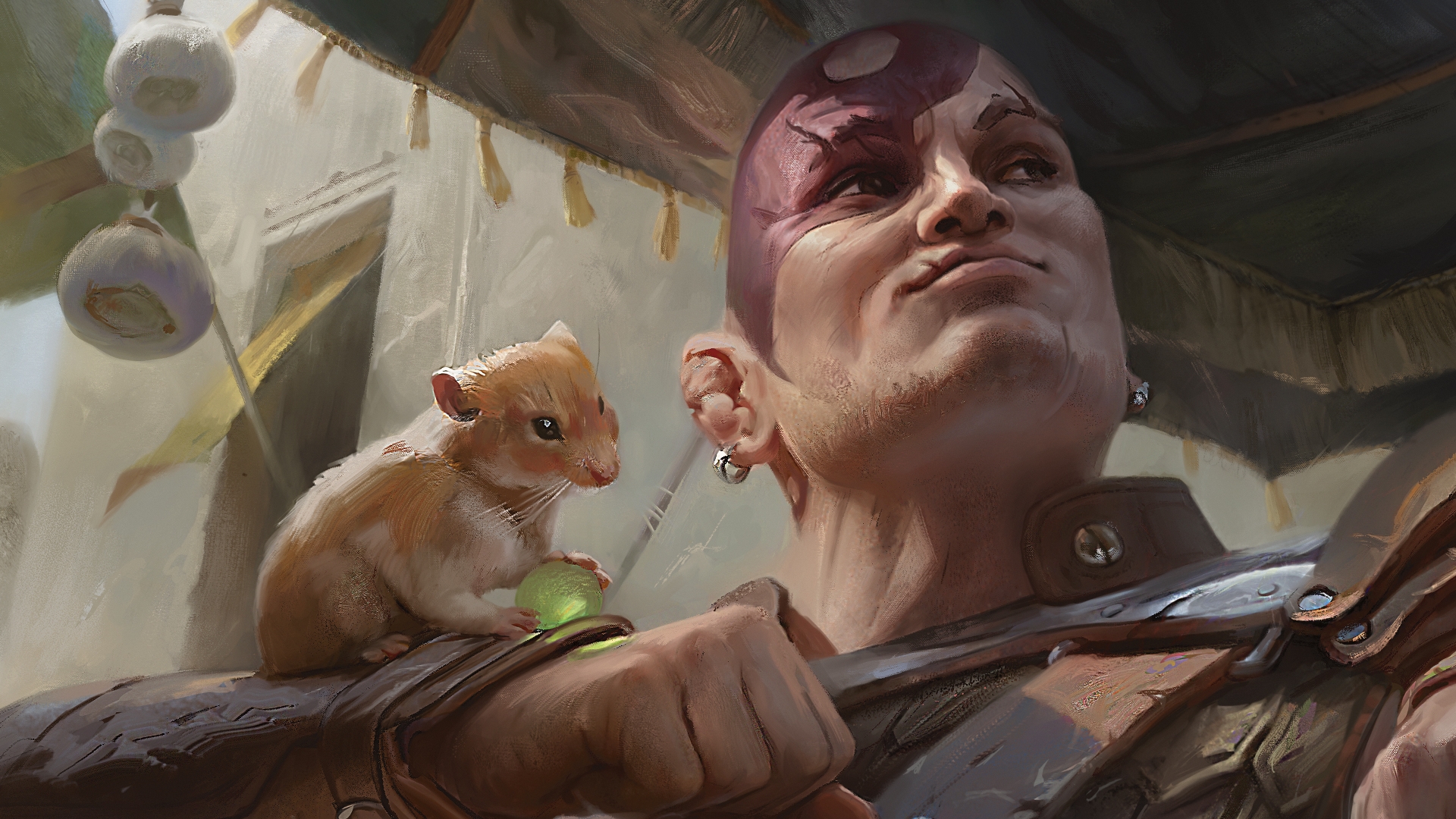
Crossovers between the two fantasy multiverses owned by Wizards of the Coast have mostly gone in one direction, with Dungeons & Dragons 5th edition receiving books about Magic: The Gathering settings like wizard college Strixhaven, city-planet Ravnica, and Greek mythology blender mishap Theros. Only in 2021 did the streams finally cross the other way—in the Adventures in the Forgotten Realms set, characters, creatures, spells, and places from D&D's current default world appeared on Magic cards for the first time.
The Commander Legends: Battle for Baldur's Gate set is part two. While the city of Baldur's Gate is its theme and plenty of cards come directly from the videogames named after it, Baldur's Gate was part of the pen-and-paper RPG first. So, like Adventures in the Forgotten Realms, a lot of cards represent general D&D-isms.
I'm partial to the You've Been Caught Stealing card, which gives a choice between two responses: Threaten the Merchant (which taps every creature that can block), or Bribe the Guards (creating treasure tokens the caster can exchange for mana). It's neat to see something that happens in basically every D&D campaign turned into a card game mechanic, and there are others like it scattered throughout, including a reprint of You All Meet in a Tavern.
If you're more familiar with Baldur's Gate in digital form you won't be disappointed, though. You'll see characters like Imoen, Jaheira, and Jon Irenicus, as well as a new version of Minsc and Boo—a solo Minsc appeared in Adventures in the Forgotten Realms, but his miniature giant space hamster Boo didn't receive the headline billing he deserved. Speaking of justice, if you remember Mazzy, the halfling holy warrior companion from Baldur's Gate 2 who wasn't allowed to be a paladin because the AD&D 2E rules were a fussy old bugger, you'll be glad to see she gets upgraded here as Mazzy, Truesword Paladin.
Even though it's still in Early Access, bits of Baldur's Gate 3 show up too. There are cards for companions like Astarion, Shadowheart, and Lae'zel, and foes like Viconia the drow cleric, plus heaps of slimy-looking mind flayers and intellect devourers.
Commander & Conquer
Unlike a regular Magic expansion, this set's explicitly for tabletop play in Commander mode, which began as a popular house-rule format where players choose a single legendary creature to be their deck's general. This face card, the Commander in Wizards' official version, is set aside from your deck and can be played as soon as you can afford to. Commanders can't be permanently removed either, though their cost goes up each time they're re-summoned.
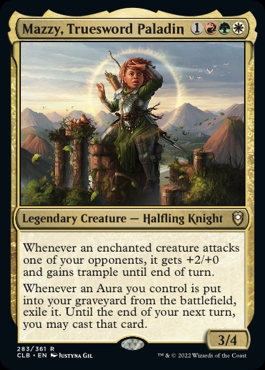
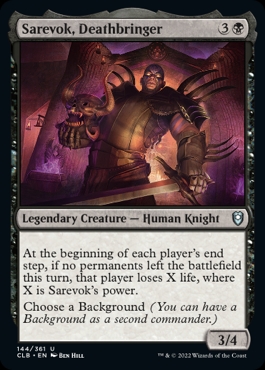
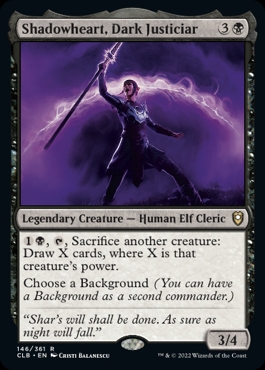
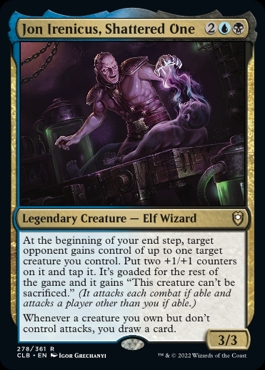
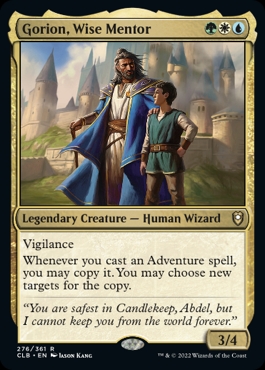
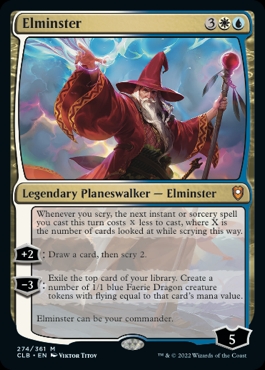
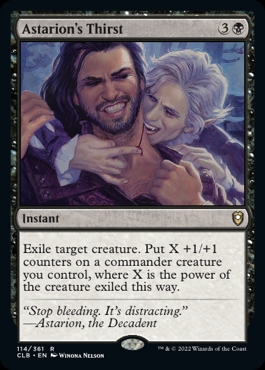
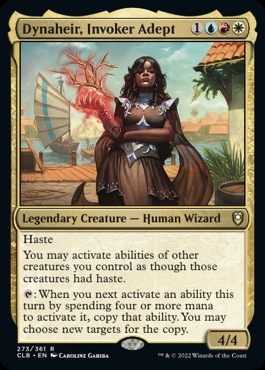
Other rules of the format include higher life totals and different deckbuilding limits, but what makes it a blast is that it's a free-for-all usually played with big groups. It's balanced for four, but I know players who've tried it with eight, which sounds like mayhem. There's a version of Commander called Brawl in Magic: The Gathering Arena and Magic Online, but it's really a tabletop thing and that's where it shines. It's about the inevitable chaos that comes with a heap of players, all guaranteed to summon a powerful legendary as soon as they can, none of them really keeping track of what everyone else is up to. Perfect for friendly knockabout matches in-person.
The biggest gaming news, reviews and hardware deals
Keep up to date with the most important stories and the best deals, as picked by the PC Gamer team.
In a typical Commander game you can only use cards that share colors with your Commander, or neutrals. Battle for Baldur's Gate makes things easier because you can also use cards that share a color with one of the new Background cards, which sit beside your general in the Command Zone and give them a power-up. Like the backgrounds in D&D 5E, they add definition, only instead of general things like 'criminal' or 'sage', they're specific. Remember the guys who shout "I SERVE THE FLAMING FIST!" over and over? With the Flaming Fist background, your Commander can be one of those twerps and add some white cards to the deck. Or they might be an Acolyte of Bahamut to score green cards, a Dragon Cultist for red, or a Faceless One, which lets you pick any color.
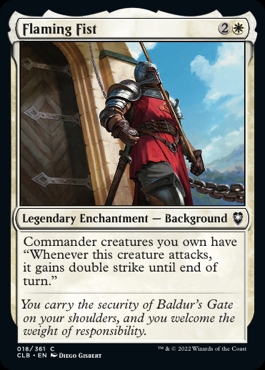
Another neat thing Battle for Baldur's Gate borrows from D&D and tweaks to its own end is Initiative. Here it's a card that appears as soon as someone plays a card with 'take the Initiative' listed in its effects. Every turn you hold the Initiative you enter another room of the Undercity dungeon and collect a reward, just like the dungeons in Adventures in the Forgotten Realms. You've got to keep that Initiative, though, and anyone who dings you for combat damage gets to steal it. It's a motivation to play cutthroat, especially once players realize the Undercity's final room lets you play a creature for free with +3/+3, and which can't be targeted by spells for a turn.
One more new rule is actually an old one returning: Adventure cards. They can be played normally for whatever's written on their right-hand side, or sent off on a jolly Adventure for the price and effect in the bottom left. Blessed Hippogriff is normally a 2/3 flying creature that gives another creature Flying when it attacks, which is thoroughly decent. Play it as an Adventure and it grants Tyr's Blessing instead, making another creature indestructible for a turn. Adventures can be played normally after use too, as if they've returned from a quest.
Is it me or is it drafty in here?
You can play Commander with decks drafted from boosters, or with pre-constructed ones. Wizards is selling four of those with surprisingly obscure picks for Commanders. There's one led by Firkraag, a red dragon from Baldur's Gate 2, and though he's not the game's main villain I do remember doing him in. Then there's a deck led by Faldorn, who I had to look up—she's the druid I kicked out of my party for not getting along with Jaheira. The third has Nalia de'Arnise, a thief/mage who briefly serves as a useful replacement for Imoen. I had to look her up too. Maybe if I'd played a fighter and got her family keep as a stronghold I'd have remembered her name. Then there's a deck led by a mind flayer pirate called Captain N'ghathrod who is apparently from a tabletop D&D module that's not even set in Baldur's Gate. I don't mind though, because his deck has the excellent name MIND FLAYARRRS.
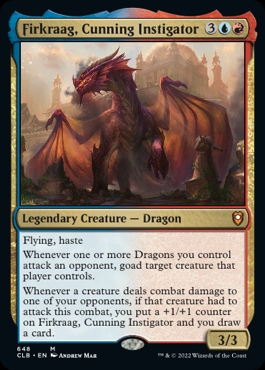
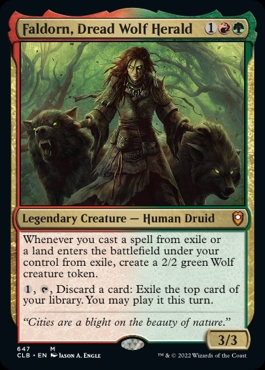
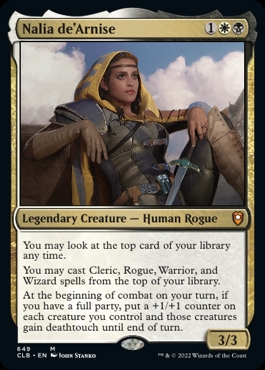
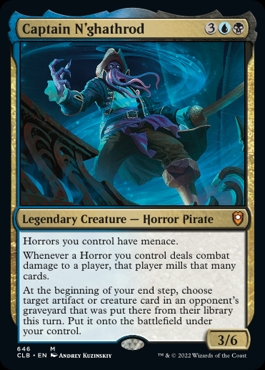
I played Battle for Baldur's Gate at a preview event where we drafted decks from boosters instead of using pre-cons. That meant cracking open a pack, taking two cards, and passing it to the next player to do the same until we'd worked through three boosters. Then we winnowed the 60 cards we'd each chosen down to 35, including a Commander and a Background, before adding 25 lands to bring us up to regulation numbers. Where preconstructed Commander is played with 100-card decks with no duplicates (barring basic lands), draft Commander is 60 cards and duplicates are allowed. One of the other tables let players trade as well, but our table was eager to get on with it.
After seeing how many draconic cards were going around, I put together a red/blue deck with a Commander called Renari, Merchant of Marvels, a character I've not seen before whose reptilian combover is in an absolute state. I combined him with the Dragon Cultist background, which meant I could play dragons and artifacts whenever I wanted, and if anything I controlled caused 5+ damage in a turn I got a free 4/4 dragon.
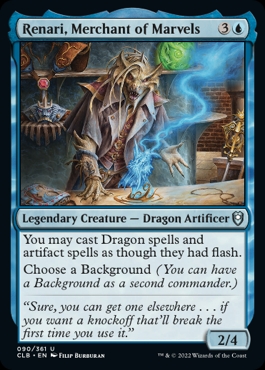
My mistake is obvious in hindsight. In any free-for-all game, from Settlers of Catan to Starcraft, the player who gets in front early becomes a target, motivating the others to team up like an alien invasion in a superhero comic. As soon as I played my first big lizard everyone else saw what I was up to and their main objective became Get Dragonboy.
It didn't help that I stacked my deck with too many mana-producing artifacts and treasures, which gave me an on-theme pile of baubles to squat on at the cost of things to spend all that mana on—like more of the big lizards I needed. Given how many ways of getting extra mana there are in these cards, Diamonds and Orbs as well as special-effect lands like Gates (including, yes, Baldur's Gate itself), I think 25 lands was too many. With 20 max I might have cycled through a bit faster and got to that Amethyst Dragon rather than wasting three turns in a row drawing Islands.
It was still fun, because Commander is supposed to be messy and improvised. The match ended with a showdown between a green deck of druid-powered beasts with trample, including a talking bear named Wilson, and a black/blue deck led by Rilsa Rael, a Baldur's Gate crime lord from the tabletop modules who gives deathtouch to a creature whenever you attack. After heavy losses on both sides it seemed like the Angry Tree Friends were about to win—until their opponent whipped out Eldritch Pact, which makes a player draw a card and lose a point of life for every creature in their graveyard. With so many elementals and animals piled up after the slaughter, that was enough to tip things the other way and give blue-black a surprise last-second win.
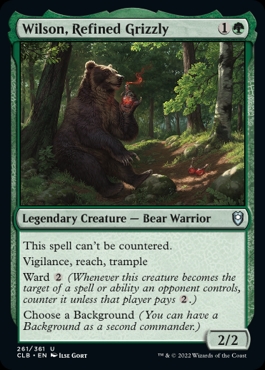
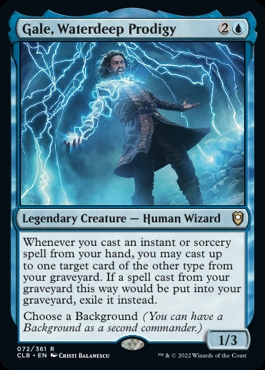
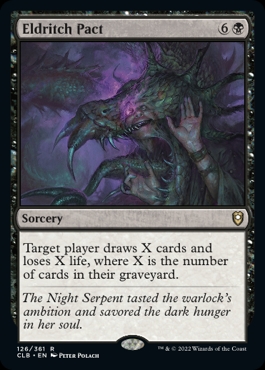
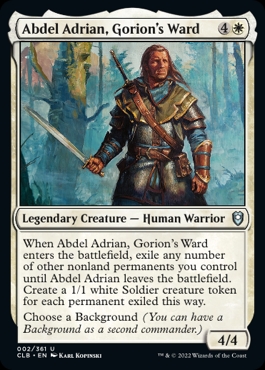
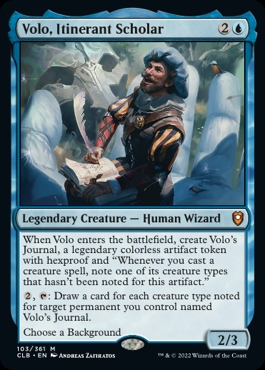
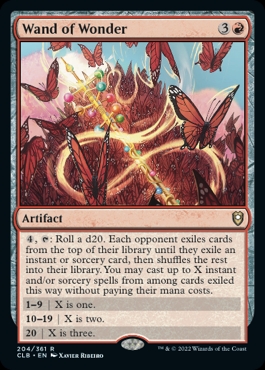
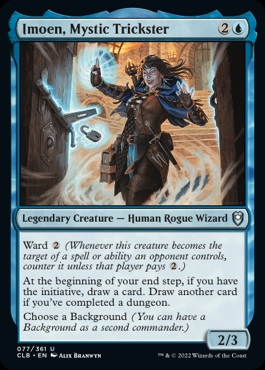
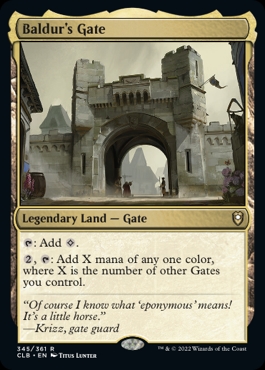
That kind of turnaround happens more often in Commander, away from competitive play's finely honed meta. Battle for Baldur's Gate plays up that element of surprise with additional goofiness like cards that make you roll a d20 for a random outcome, or let you throw a hamster, or tell everyone they've been caught stealing. This particular set seems a little less beginner-friendly than Adventures in the Forgotten Realms thanks to the rules complications mentioned above, but the Commander format is so chill and encouraging it still makes a decent intro to tabletop Magic.
(One player should definitely download the companion app, which has a life tracker that's basically essential.)
Commander Legends: Battle for Baldur's Gate will be available from June 10.

Jody's first computer was a Commodore 64, so he remembers having to use a code wheel to play Pool of Radiance. A former music journalist who interviewed everyone from Giorgio Moroder to Trent Reznor, Jody also co-hosted Australia's first radio show about videogames, Zed Games. He's written for Rock Paper Shotgun, The Big Issue, GamesRadar, Zam, Glixel, Five Out of Ten Magazine, and Playboy.com, whose cheques with the bunny logo made for fun conversations at the bank. Jody's first article for PC Gamer was about the audio of Alien Isolation, published in 2015, and since then he's written about why Silent Hill belongs on PC, why Recettear: An Item Shop's Tale is the best fantasy shopkeeper tycoon game, and how weird Lost Ark can get. Jody edited PC Gamer Indie from 2017 to 2018, and he eventually lived up to his promise to play every Warhammer videogame.

